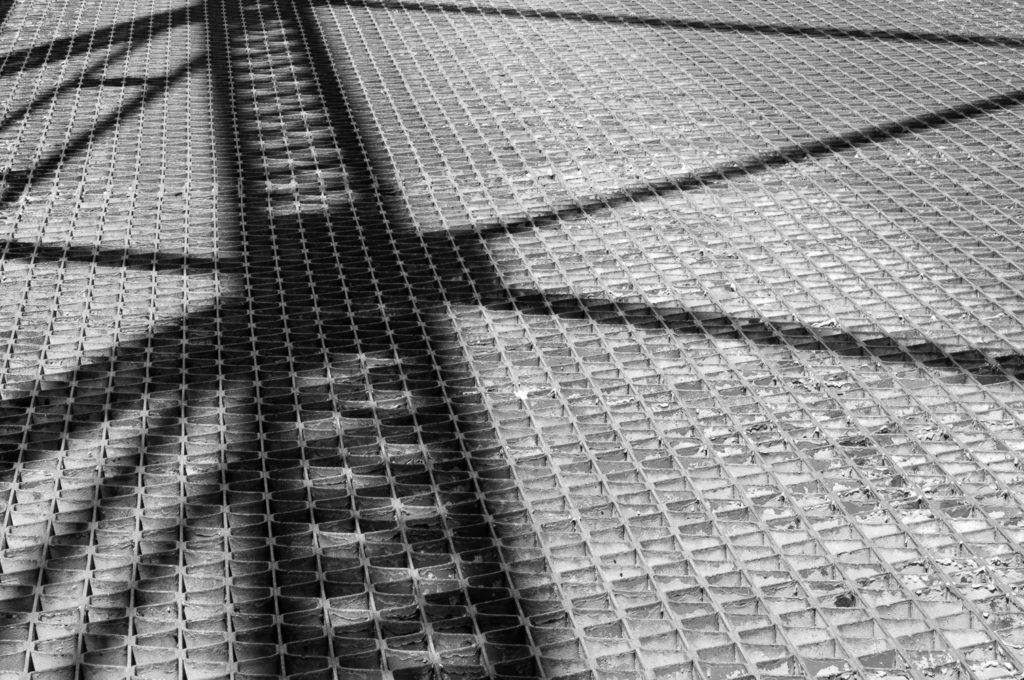A while back I had the chance to photograph an old steel bridge that spanned the Erie canal. It had been declared unsafe for traffic and was blocked off for a couple years until it was finally replaced by a new bridge. Since it was closed, I could photograph it all day without worrying about getting hit by cars.
The cool thing about the bridge was the geometry. Beams ran all over the place held together with rivets and bolts. At some places 5 and 6 beams from different angles would all meet together and join at a single point. The deck was a seemingly endless grid of interlocking shapes.
And it was tall. It seems counter-intuitive to a non-engineer like myself but most of the structure holding the bridge up was on the top. If I were building a bridge I would put all the supports underneath. Instead the steel towered over my head reaching into the hot blue summer sky.

Media: Digital Photograph
Why did I take photos of it? It was just a steel bridge like thousands of others. People drove over this bridge for years and years without giving it a second thought. Could I find any interest, any beauty in the utilitarian criss-crossing of the metal?
Some people might think so. Some people like Piet Mondrian. You remember him – the poster boy for geometric art.
“It is possible that, through horizontal and vertical lines constructed with awareness, but not with calculation, led by high intuition, and brought to harmony and rhythm, these basic forms of beauty, supplemented if necessary by other direct lines or curves, can become a work of art, as strong as it is true.”
Piet Mondrian

Do my bridge photos add anything to the corpus of geometric art or are they just random photos of parts of a bridge? Hmmm. I think too often we think of abstract photos as merely zooming in on something strange looking until people can’t tell what it is and voila! it’s abstract art.

Media: Digital Photograph
But I think we need to go beyond that. Mondrian and other artists creating non-representational works aren’t just splashing paint around until people can’t tell what it is and calling it art. I know it looks like that sometimes, but the really serious artists aren’t doing that. They believe that certain combinations of line, color, and form can touch the viewer’s mind in the same way that musical notes and rhythms can. It’s the artist’s job to determine what those combinations are and to translate them into physical form.
Some music is just bad. It doesn’t flow right or it’s unnecessarily repetitive or whatever. Other music is fantastic and it finds a place in the hearts of people everywhere. Just so with abstract art like geometric art. Some works fall flat. The artist hasn’t found the right combination of elements. It’s just a bunch of lines. Other works touch and inspire us. Even though we can’t say what they are, it’s not a person or a landscape or any other physical object, and yet they still affect us deeply.

Hi Mark,
I enjoyed your thoughts on this, the mystery of what the right combination is, while knowing that it has something to do with what it feels like. I experience something like this with writing (if I’m lucky). Sometimes the right tangle of words arises. Just have to listen and be open; and maybe the words ring out….
Regards